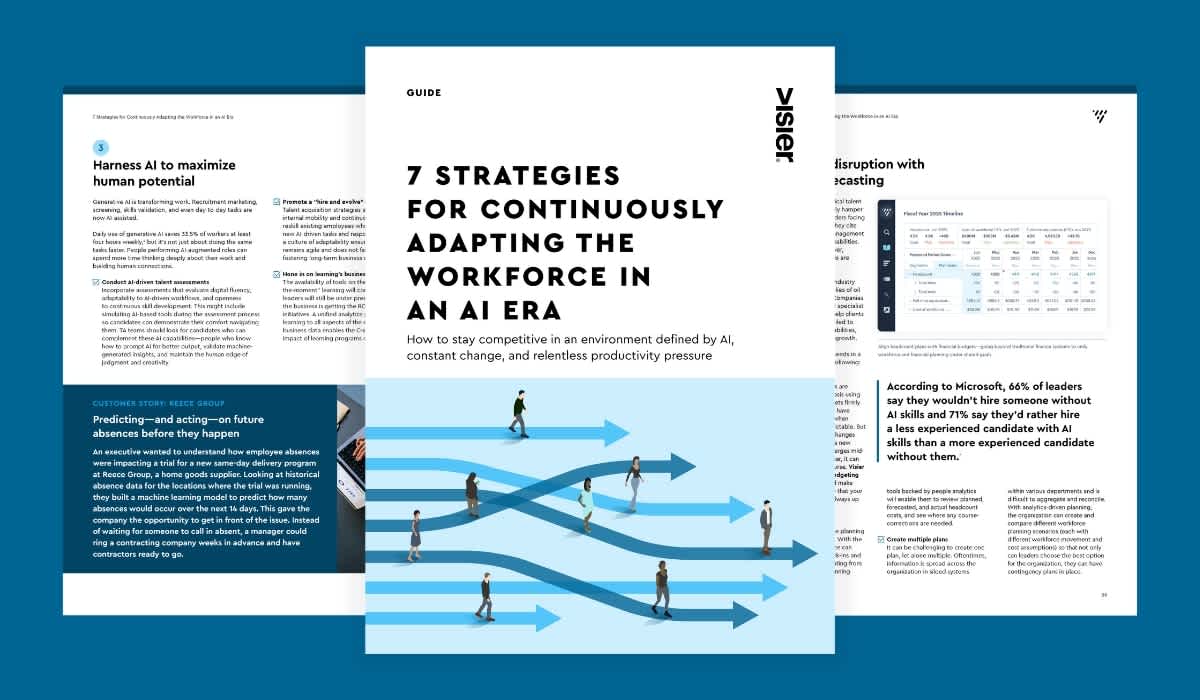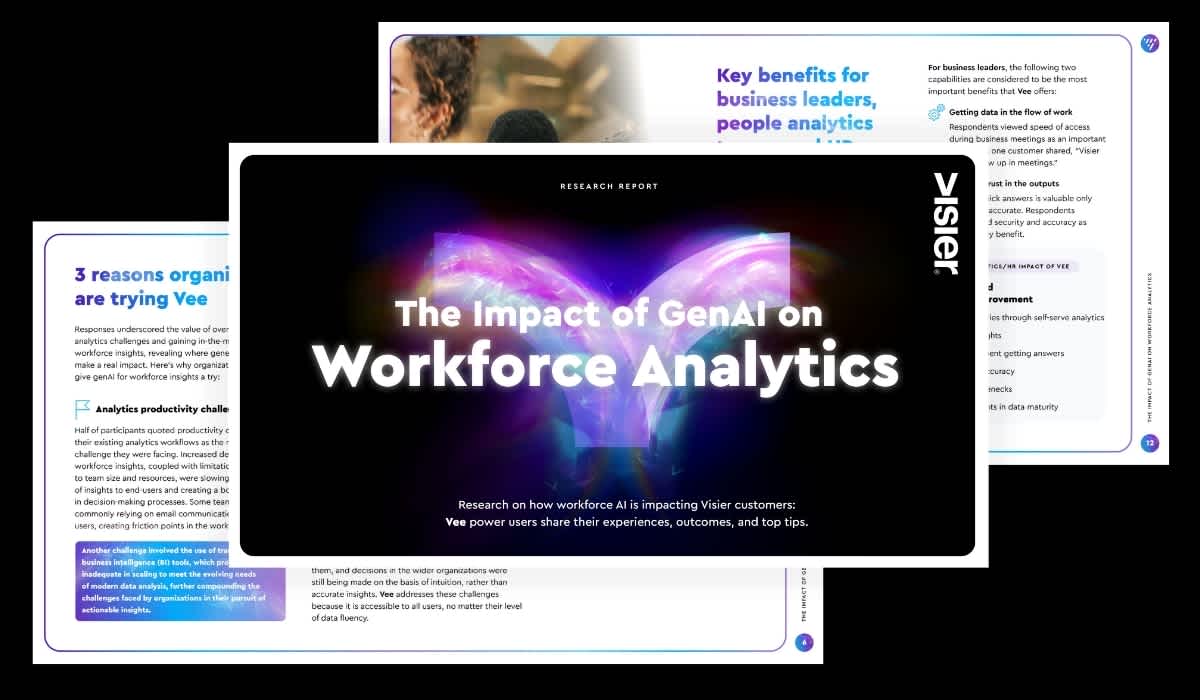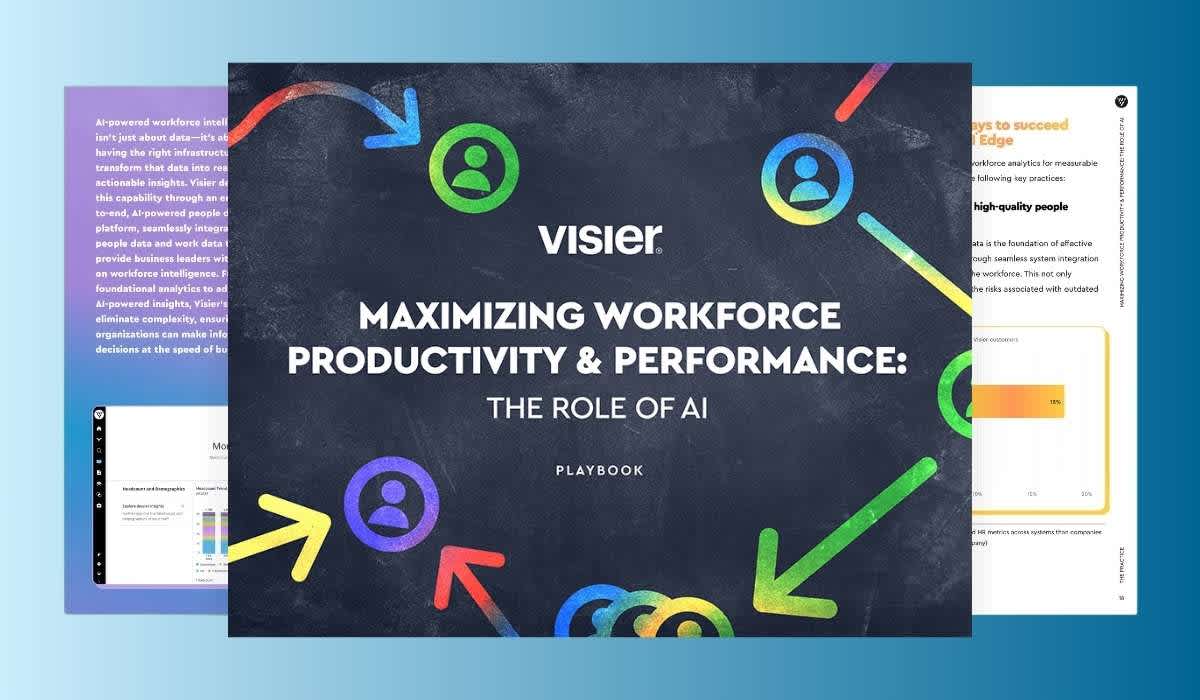Top Takeaways from Outsmart 2025 ‘Embracing the AI-Driven Workforce'
At the annual customer conference, Outsmart 2025, HR innovators, people leaders, and disruptors gathered for two days of inspiration, innovation, and Workforce AI strategy. Read the top takeaways here.

Over 400 attendees gathered at the Outsmart conference in Austin, Texas, for two days of inspiration, innovation, and Workforce AI strategy. There, Visier announced its strategic vision for continuous workforce planning and the full integration of Visier’s workforce AI digital assistant, Vee, with Microsoft 365 Copilot.
The conference buzzed with excitement around sessions like "Productivity Use Cases," where attendees explored how leading organizations are leveraging people and work data to measure productivity across the workforce. Another standout session, "Dream It, Build It," highlighted how customers are extending the Visier platform to meet emerging workforce management needs—from designing self-serve CFO dashboards to linking internal job data with external sign-on bonus trends to craft competitive compensation strategies.
Attendees dove into focused breakout sessions, hands-on lunch and learns, training with Visier University, and connected over shared interests through a variety of Austin-themed networking events. Whether kayaking on Lady Bird Lake, biking the scenic trails, or touring two of Austin’s top craft breweries, there was something for everyone. Some opted to build guitars for local schools, while others customized cowboy hats, explored the local art and food scene, or took a few swings at Topgolf.
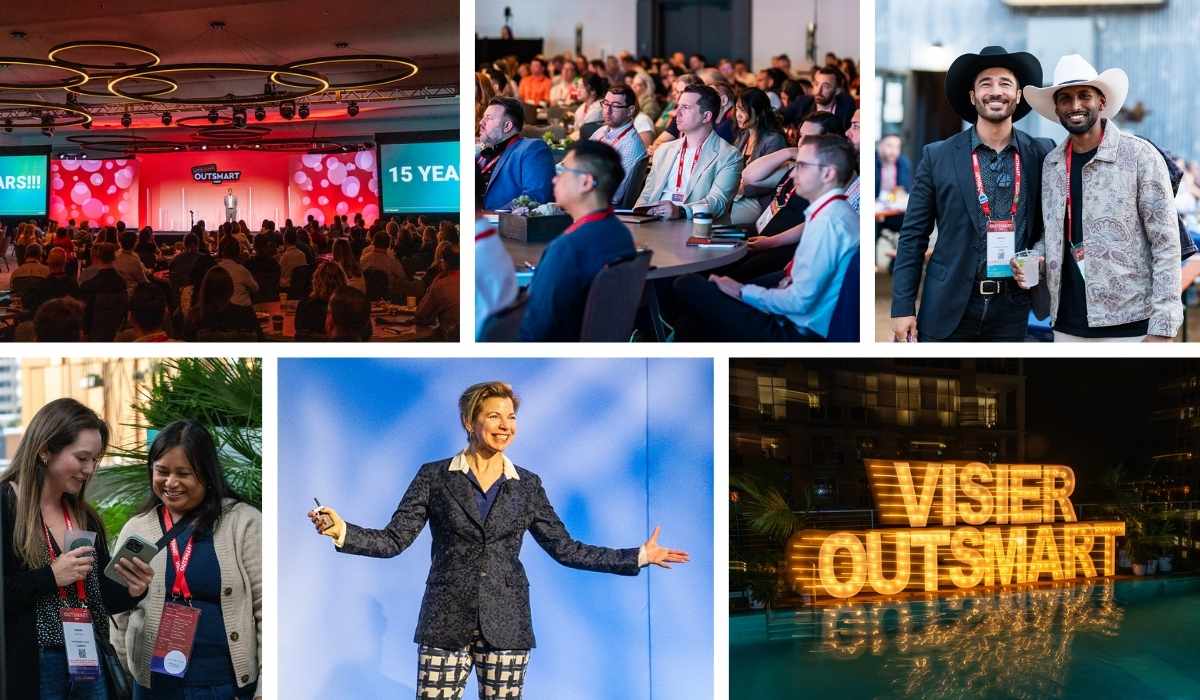
The two-day conference, set against the vibrant backdrop of Austin’s live music and creative energy, was a reminder that innovation thrives in environments that blend insight with inspiration. Attendees discussed how, in a time of AI-driven change, business volatility, and evolving expectations, the most successful organizations won’t just react. They’ll lead with meaning, use data to guide organizational resilience, and turn insight into action.
“In a world defined by constant disruption—economic, geopolitical, social, and technological—we can’t afford to sit on the sidelines,” said Paul Rubenstein, chief customer officer, Visier, and emcee of the event. “We are experiencing the most profound workforce transformation in over a century, driven by the rise of AI. HR and people analytics leaders must step forward, embrace change, and focus on the business impact of their workforce. Building a Workforce AI Edge is no longer optional; it’s essential for competitive advantage.”

Outsmart sessions centered around three themes
1. Innovation and impact at the intersection of people and work
Key takeaway: People analytics deliver maximum value when tied directly to business results like productivity and financial performance. Connect with a business leader to find a starting point to correlate people data with key business metrics. From there, you can define the value clearly and articulate the business impact.
One of the most urgent themes at Outsmart 2025 was the need for HR and people analytics leaders to tie their work directly to business outcomes. In today’s climate of disruption—from technological shifts to economic volatility—people data delivers maximum value when it's connected to what matters most: productivity, performance, and financial impact.
Today’s rapid pace of change demands that organizations be agile and resilient. HR and analytics teams are poised to use data to lead the way, but they need the ability to run analyses in a matter of hours, instead of weeks, to respond to new disruptions. By using people analytics to combine people data with work data and partnering with business leaders to identify clear correlation points between the workforce and business KPIs, HR can elevate its role from service provider to strategic driver.
“Executing on productivity in an age of vast disruption requires you to be able to see around corners,” said Jeremy Shapiro, AVP, human resources, workforce analytics, Merck. “Analytics helps you do that."
2. Continuous planning for the adaptive enterprise
Key takeaway: We see firsthand the current volatility and disruptions, and this level of change and uncertainty is becoming more and more common. Move towards continuous workforce planning to build resilience and agility, not just annual cycles.
Workforce planning is no longer an annual event. It’s a dynamic, continuous, collaborative effort that enables organizations to respond quickly to change. Strategic workforce planning succeeds when HR, Finance, and business leaders align on goals, scenarios, and trade-offs. You can still have an operational plan for the year and a strategic workforce plan for the next 2-5 years, but you need the ability to run analyses in real-time and pivot as necessary in response to global and technological events. This is increasingly crucial in the AI era.
“The market is moving toward agile ways of working so you can react to the ever-changing speed of business,” said Kelli Klindtworth, lead workforce planning consultant, Visier. “Why continuously plan? You want to be able to make new plans and tell new stories as often as necessary to meet the needs of your employees and the demands of the market.”
3. The changing role of people analytics in the age of AI
Key takeaway: Use workforce AI tools to ensure the right data and insights reach the right people at the right time. Deliver instant insights with Vee, create and distribute Vee Boards to executives, and activate Vee for Copilot to surface insights directly within Microsoft’s productivity suite.
AI isn’t just automating tasks, it’s reshaping job roles and organizational structures. To keep up, companies must rethink how work gets done and leverage AI to augment human potential and build agile, responsive workforces.
Workforce AI tools like Vee provide real-time insights, empowering leaders to make informed decisions quickly, enabling HR teams to save time, deliver instant insights to end users, and reduce friction across HR processes. Now, Vee’s integration with Microsoft 365 Copilot makes it possible for every Copilot user to access vital information about their workforce, simply and securely.
"By embedding Vee into Microsoft 365 Copilot, we're dismantling the barriers between workforce data and decision-making in the flow of work," said Keith Bigelow, senior vice president & chief product officer at Visier. "This integration ensures that critical workforce insights are surfaced in real-time, within the applications leaders already use—enabling them to act with confidence and agility."
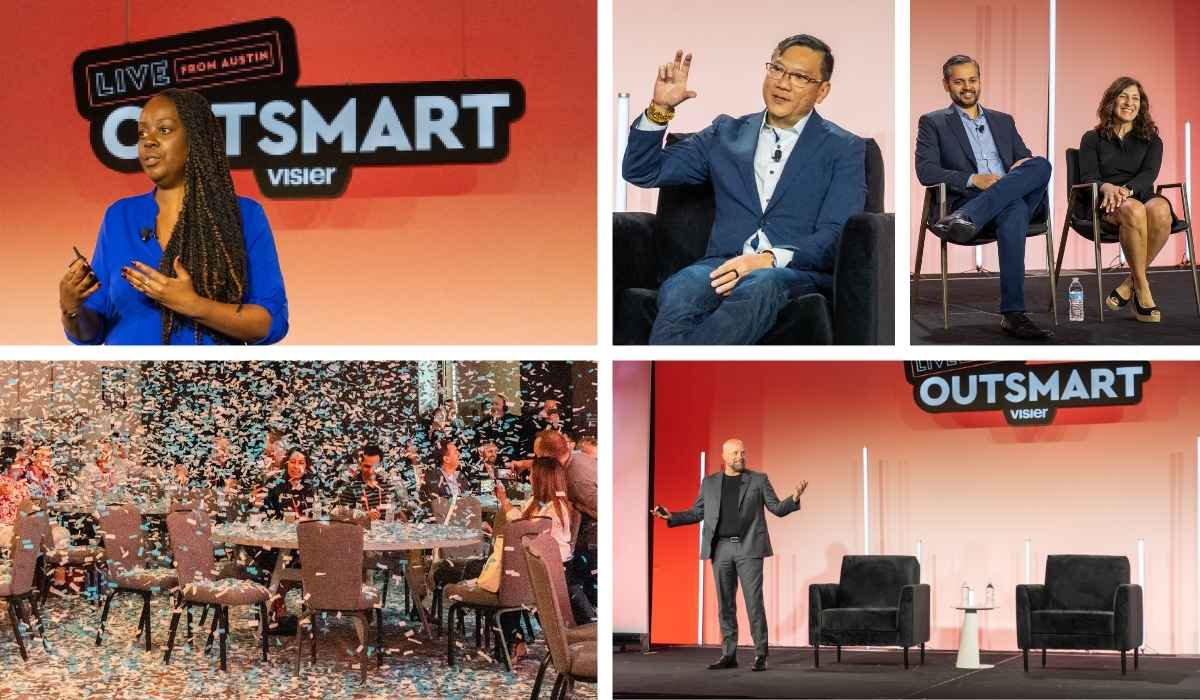
Keynotes from special guests
Kate O'Neill. Outsmart’s opening keynote speaker Kate O’Neill delivered a compelling presentation exploring the transformative role of AI in today’s business landscape. With her signature blend of insight and humanity, Kate examined the evolving intersection of work, data, and organizational success, urging attendees to view these shifts through a human-centered lens. Drawing on real-world examples and strategic frameworks, she reminded attendees that you can’t get good results without asking good questions and highlighted how organizations can harness AI to amplify human potential at every level.
Susan Cain. Susan Cain, author of Quiet: The Power of Introverts in a World That Can't Stop Talking, captivated the audience with a thought-provoking keynote on “Quiet Leadership,” drawing on original research, neuroscience, and psychology. Susan challenged conventional assumptions about leadership and collaboration, highlighting how introverted individuals often drive the most creative and impactful contributions within organizations.
What's now, what's new, what's next in product
Visier’s head of product, Keith Bigelow, showcased current and planned product capabilities designed to enable customers to unleash the full potential of their entire workforce with a Workforce AI Edge. Using Visier’s AI-powered people data platform, customers can:
Understand their people
Understand the work they do
Predict, decide, and act with confidence
Unlock workforce productivity
Bigelow shared “what’s now, what’s new, and what’s next” for Visier People® and add-ons, Visier People® Extend, Visier Workforce Planning, and Vee—including agentic AI use cases.
Recognizing Visier customer achievements
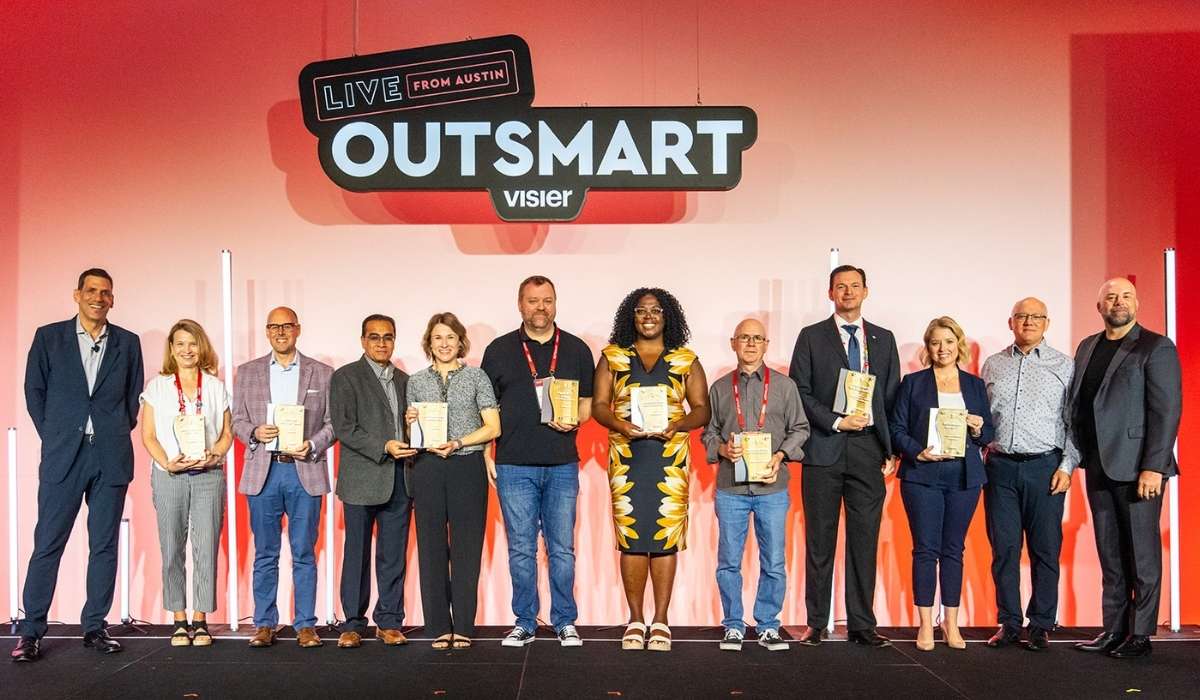
Vizzie Award winners stand alongside Visier executives, from left: Paul Rubenstein (Visier), Teresa Kuhn (T. Rowe Price), Michael Walsh (Eaton), Kunal Thakkar (IQVIA), Katie Ward (IQVIA), Mark Tucker (Kong, Inc.), Davida Smart (DocuSign), Mike Hunter (Johnson & Johnson), Gary Russo, Providence, Alison Hamm Tampa General Hospital, Ian Cook (Visier), Bryan Nielson (Visier).
The Vizzie Awards, an annual Outsmart tradition, were presented to Visier customers for excellence in eight categories: Best Use of AI with Vee, Rookie of the Year, Best Technical Innovation, “Perfect Pair” Collaborations (between people analytics leaders and CHROs), Democratizing Data Within HR, Democratizing Data Beyond HR, Business Impact, and Content Excellence.
Read more about the 2025 Vizzie Award winners here.

